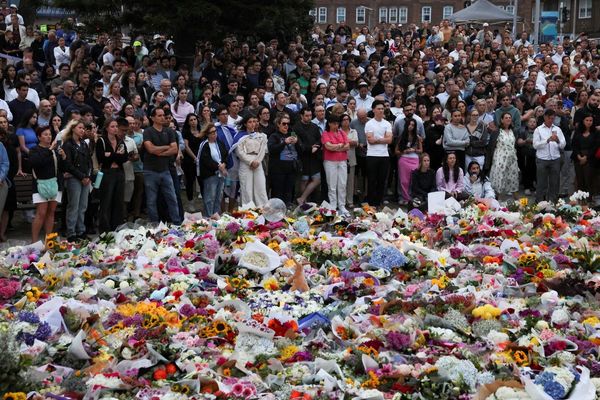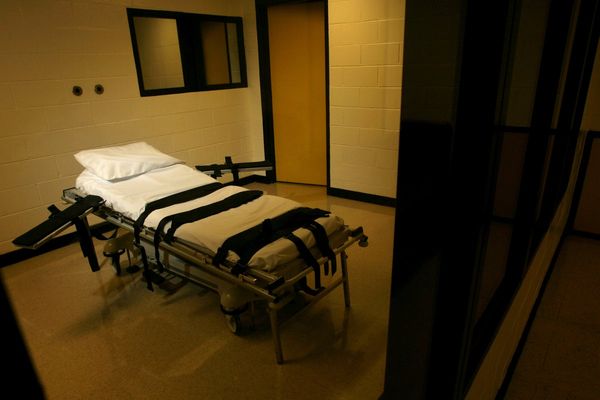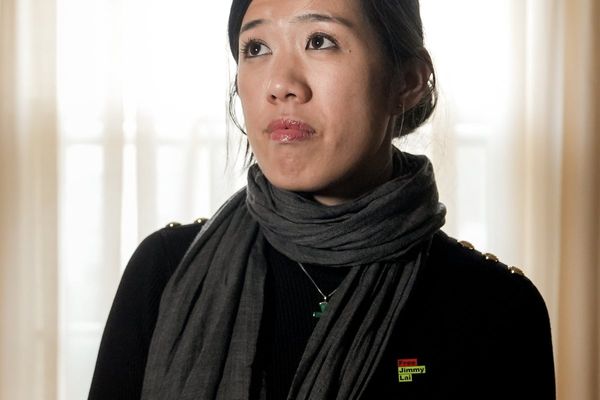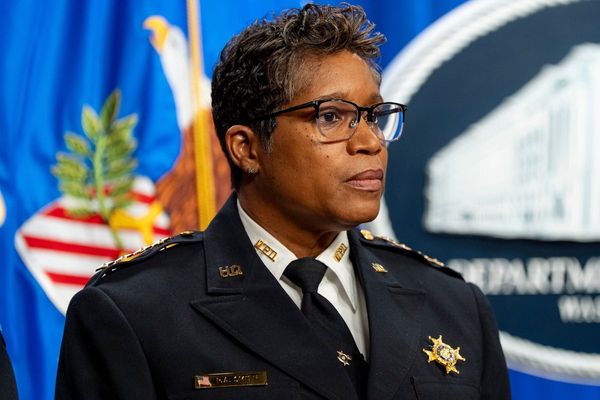
At St John Henry Newman Catholic college, a state secondary in Oldham, a minibus goes out twice each morning and collects children who don’t want to come to school. But headteacher Glyn Potts knows that persistent absence – which has mushroomed across the country since Covid – often requires more than a lift to solve.
“We had a number of children who stopped coming in on certain days,” he says. “When we explored it we found mums who had taken extra shifts at the factory or nursing home to keep food on the table and the older child was staying at home so someone could collect the youngest from primary school.”
Although it is a national issue, higher rates of absence have been flagged as a likely factor in causing children in the north to fall starkly behind those from London and the south-east again in this summer’s GCSE and A-level results.
Last week over 28.4% of GCSE exams were graded 7-9 in London, compared with 17.6% in north-east England and 18.6% in the north-west. A-levels results showed a similar picture. While in London 30% of A-level grades were A or A* (up from 26.9% in 2019), in the north-east this figure was 22% and in the north-west it was 24%.
The split between north and south focuses on England. Wales, Northern Ireland and some private schools in Scotland all take GCSEs but there has been less focus on results in all devolved regions because they are removing grade inflation more slowly.
Potts says not turning up is often a sign of deeper social problems. The school has “quite a number” of young people from low-income families who have been hooked into distributing drugs for county lines gangs, “because they earn good money”. After years of public services cuts the school has to wade in on social care issues, often working with families to solve problems like housing.
“Children aren’t going to be interested in school if they haven’t got a bed,” Potts says.

The double whammy of Covid and the cost of living crisis has meant that an extra quarter of the schools’ families are really struggling to pay bills and buy food. The school gives out free breakfasts as an incentive to non-attenders to come in. “Parents are having to make decisions about things like whether to give children money for food in the school day or for school transport,” Potts says.
Oldham has one of the highest rates of parental fines for pupils missing school in England, which makes Potts deeply uncomfortable. “If I fine these families I’m making their situation worse,” he says. “And what exactly is the plan here? Is it really bearing fruit?”
Frank Norris, education adviser to the Northern Powerhouse Partnership (NPP), says to solve the crisis of absence schools in more deprived areas need support to re-engage not just children, but also their families, after the pandemic. “The idea that they are all just lazy good-for-nothings who are walking round shopping centres in their slippers is wrong. It’s not what I’m seeing,” he says.
Norris argues that parents struggling to pay for electricity, heating and food often won’t be focused on getting their kids into school, much as they might want to. “In the most acute areas, the stress in families is worse than I’ve ever seen,” he says.
For many schools, he fears, the problem has become too big to handle. “If you’ve got a secondary school with 2,000 kids and 250 regularly don’t attend, that is a massive problem to fix,” he says. “If you wanted to connect with the families to understand what is going on, how do you deal with that alongside everything else a school has to do?”
Sir Kevan Collins resigned as the government’s schools recovery tsar in 2021 after the government agreed to fund only 10% of the £15bn package he felt was “the minimum viable option”.
This week he told the Observer that his greatest fear then was that, without proper investment, existing gaps – between children in the north and the south, and between the least and most privileged – would widen. This summer’s results proved him right, but he says: “I take no comfort in the idea of ‘I told you so’. It feels very sad.”
He adds: “Teachers and schools have been heroic in all this, and they were abandoned. The scale of it required a national endeavour. It still does.” Collins says that children who were well supported by families and schools have “recovered pretty well” from the pandemic, but children who didn’t have that support “have been really badly hit in ways I couldn’t have imagined then, such as the stark and scary numbers on persistent absence”.
He thinks it is right that schools should seek to understand what is going on behind this absence – but “we should never accept it. To me it signals a breakdown in the social norm that this is just something you do every day”.
He worries about a potential lost generation of young people who may have walked away this week with GCSE grades lower than a 4 and a feeling that they have failed – even though if they’d happened to sit their exams last year that 3 would probably have been a 4. “When you meet a child who got a 3, that sense that they’ve somehow failed is profound,” he says. “The vast majority who have to resit English and maths will fail again. You create a cycle where they stop believing in the promise of education.”
The fact that there is now a record attainment gap between top GCSE grades awarded to pupils in London and those in much of the north of England is not only terrible news for young people and their parents in those educationally disadvantaged areas. It is also a serious blow to a government that claims to be committed to “levelling up” the country.
Many Conservative MPs who won seats from Labour in “red wall” areas at the 2019 general election were promised that educational opportunities – as well as economic ones – would be made more equal.
For those Tory MPs, particularly ones with small majorities, the GSCE and A-level results will have been arguably as important in determining their futures as for the students who sat the exams. As far as education standards are concerned, the results will hardly strengthen their case with constituents for voting Conservative again.
There is already frustration that key levelling up projects, including for transport and economic regeneration, have been ditched or cut back. The Northern Research Group of Conservative MPs will launch a manifesto at the party’s annual conference in Manchester, hoping to keep levelling up on the road.
Last week on BBC Radio 4’s Today programme, the schools minister, Nick Gibb, appeared to confirm that the education north-south gap had widened, giving Labour a political opening a mile wide to exploit.
Bridget Phillipson, the shadow education secretary and MP for Houghton and Sunderland South, said the divide reinforced the impression that the Conservatives were “happy to see the managed decline of educational standards across large swathes of England.”
Henri Murison, the chief executive of the NPP, said reforms introduced under the Tories had simply not been ambitious enough.
“Although it was right to extend pupil premium funding for 16 to 18-year-old care leavers in some areas it has gone nowhere near far enough, which is why we need this extended further to all the poorest young people from 16 to 18 years old as an emergency response to this week’s results.
“The government has failed many of the poorest who took GCSEs this year with a lacklustre tutoring programme; it is clear they need extra help when they arrive at college or sixth form next month.”
The Rev Steve Chalke, whose Oasis Charitable Trust runs 54 academies in deprived areas of England, says: “It is so frustrating that the government didn’t back Collins’s recovery plan. The writing was on the wall then and these GCSE and A-level results put the final nail in the coffin of levelling up. The geographical differences are stark.”
Chalke argues that the results show the truth that children from comfortable homes “with good housing and good salaries who can give time and decent wifi and peace” are able to perform “hugely better than children from homes where employment is precarious, accommodation is squashed, money is scarce and parents don’t have the time or energy to sit with children they love just as much”.
Jonny Uttley, chief executive of the Education Alliance academy trust, which runs eight schools in Hull and the East Riding of Yorkshire, said: “Sir Kevan laid out exactly what needed to happen to help children catch up, and policymakers chose not to hear it. As a consequence you are now seeing yawning gaps again between the advantaged and the less advantaged.”
Meanwhile the government’s announcement this week that it had approved Eton College to open free sixth-form colleges in Dudley, Middlesbrough and Oldham to offer “transformative outcomes” for disadvantaged young people, has gone down like a lead balloon with headteachers, who say it will do nothing to bridge the north-south educational divide.
The new colleges will select pupils based on high GCSE results and Darren Hankey, principal of Hartlepool Further Education College near Middlesbrough, said: “Sharp-elbowed middle class parents will focus on getting a free Eton education for their kids there, just as they’ve done in grammar schools.”
A recent review found there were too many post-16 providers in the Teesside area and recommended mergers. “Because of its name and reputation, of course this new college will get its numbers,” Hankley says, “but they will be drawn from colleges in the area which are already hand-to-mouth and all rated good or outstanding.”
Over more than 13 years the Conservatives have promised to deliver improved education regardless of the postcodes in which young people attending state schools happen to live. Early in his premiership Boris Johnson said he wanted “every parent across England to know that their child’s education is at the very heart of this government’s agenda”, while Rishi Sunak said that improving standards in schools across England was a reason he came into politics. This weekend, for those living in large parts of the north of this country, such comments will ring particularly hollow.
Government policies over the decades
National literacy strategy
The literacy strategy was a cornerstone of Tony Blair’s 1997 election pledge to focus on “education, education, education”. It introduced a daily hour of literacy (and later numeracy) in primary schools to tackle concerns that too many children started secondary school unable to read properly. It led to significant rises in national assessment test results. The strategies were also credited with reducing the attainment gaps related to disadvantage and ethnicity. Critics say, that an over-focus on literacy and numeracy narrowed the primary curriculum. 4/5
Infant class size policy
Class size legislation was introduced in 1998 to stop overcrowding. It limits classes for five, six and seven-year-olds to 30 pupils. Data shows that the vast majority of children are in classes at or under this level, although in 2012/13 the proportion of larger classes increased after a baby boom. Conservative administrations have introduced various exceptions to the limit. Although research is inconclusive about the benefits of smaller classes, parents and teachers think it matters and many would like to see the maximum set well below 30. Smaller classes are often cited by parents as a key reason for sending their children to private school. 3/5
The English baccalaureate
The coalition government’s English Baccalaureate policy (EBacc) began in 2011 in an attempt to force schools to teach traditional subjects and drop “low quality” vocational alternatives. Schools are required to publish the number of GCSE passes in English, maths, science, modern foreign languages and history or geography. In 2011, only a fifth of pupils entered all five subjects at GCSE. This has since risen to between 38% and 40%, well short of the 75% target. The performance measure has been roundly criticised for sidelining arts subjects and forcing all students down the same academic route. Supporters argue that it keeps all subject options open for pupils post-16. 2/5
Pupil premium
Introduced in 2011, the pupil premium is the main government policy to tackle educational underachievement linked to deprivation. In 2023-24, schools will receive an extra £1,455 for each primary pupil and £1,035 for each secondary pupil eligible for free school meals. While there are examples of the funding making a difference, 2022 results in primary tests, GCSEs and A-levels suggest that the attainment gap between pupil premium children and their peers has widened. Headteachers say the pupil premium cannot make up for the general lack of funding and that in some situations they use the money to plug funding gaps rather than targeting it. 3/5
Academisation
The policy began under Labour with specialist schools and city academies, aimed at giving successful heads room to innovate and targeting struggling secondaries. It was adopted by the Conservatives in 2010, with promises of more academies and “free schools”, independent of local authority control. By January 2022, 79% of secondary and 40% of primary pupils attended academies and free schools, many run by multi academy trusts. Supporters say the system has given heads more control and driven up standards - 88% of state-funded schools are now judged good or outstanding, compared to 68% in 2010. Opponents point to a significant number of inadequate academies, a lack of accountability and the big pay of some trust bosses. 3/5
Julie Henry







